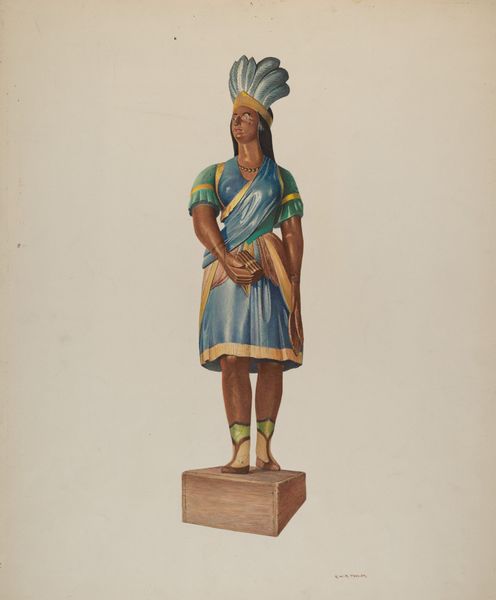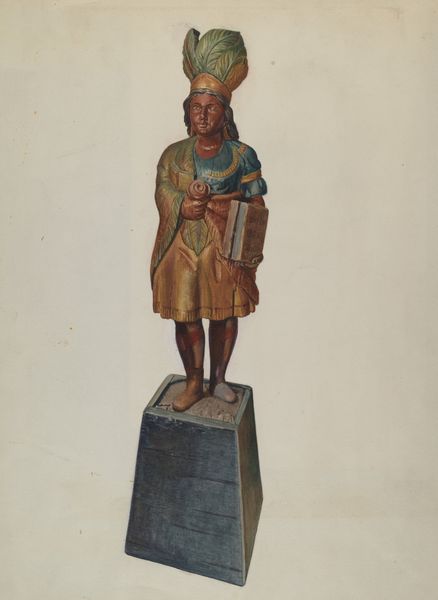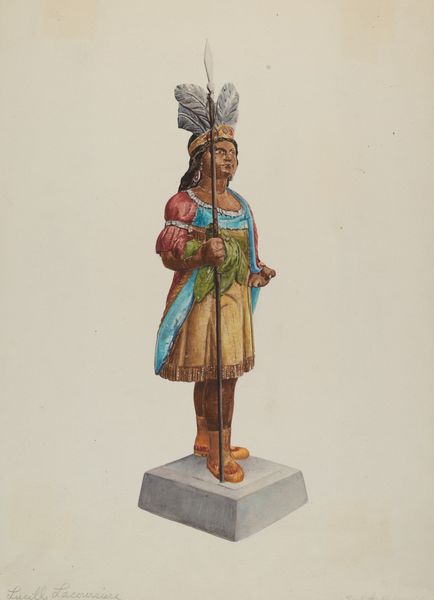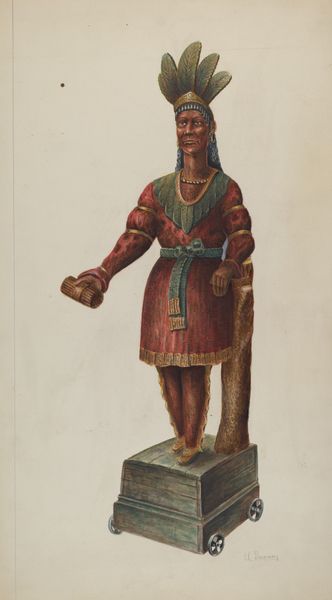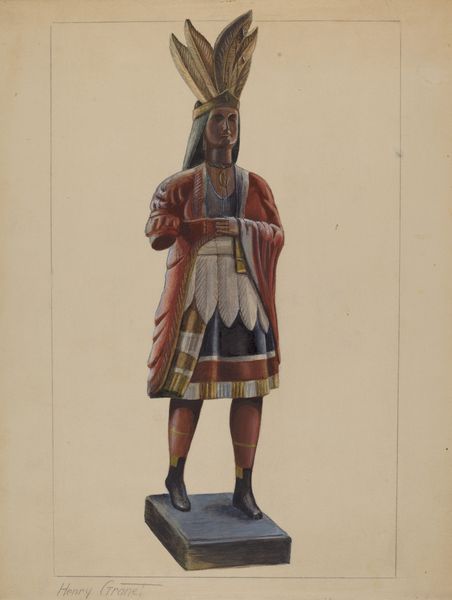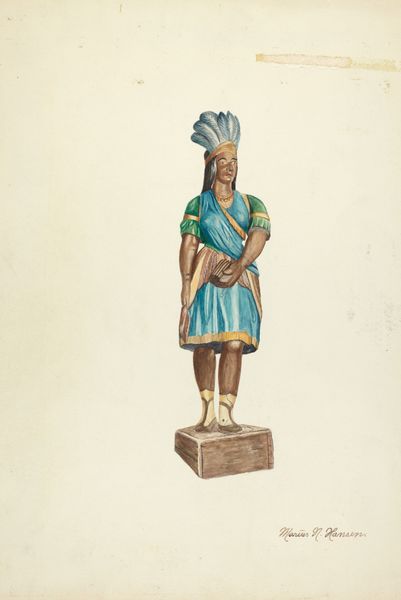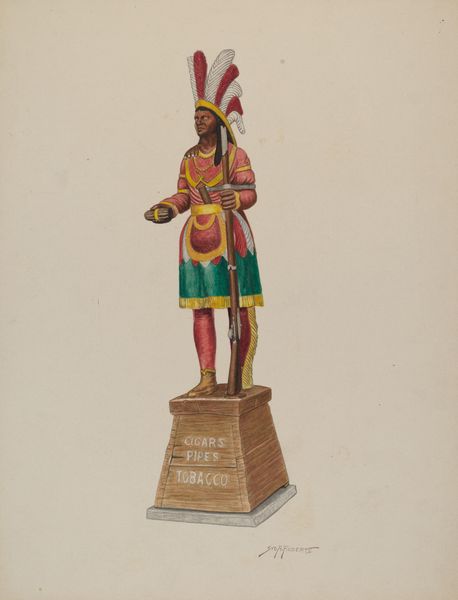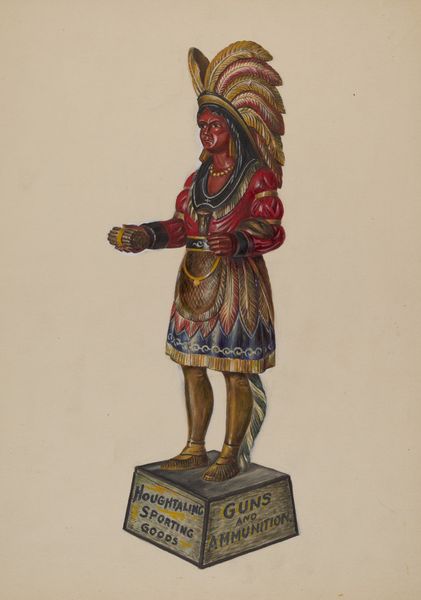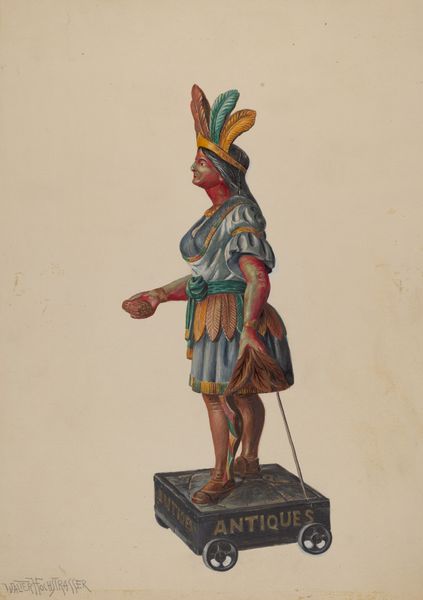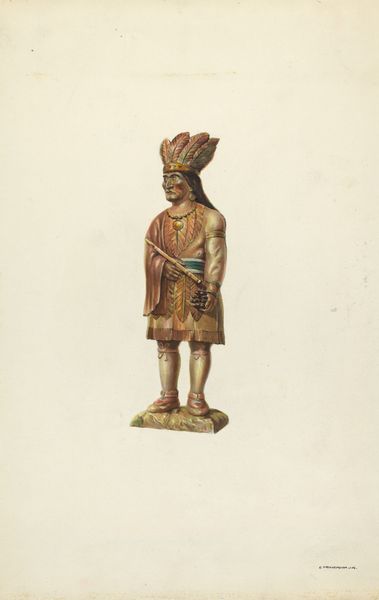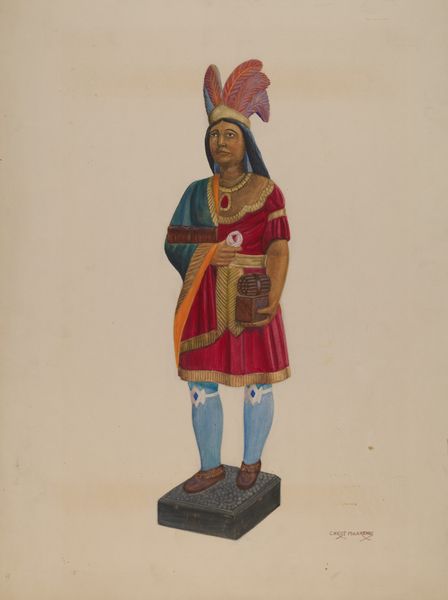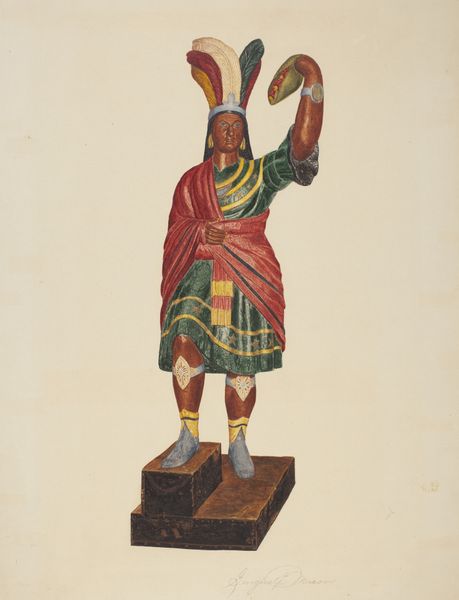
drawing, painting
#
drawing
#
painting
#
figuration
#
watercolour illustration
Dimensions: overall: 60.9 x 45.9 cm (24 x 18 1/16 in.)
Copyright: National Gallery of Art: CC0 1.0
Curator: This watercolour and pencil artwork presents a Cigar Store Indian. Its creation is dated sometime between 1935 and 1942 by the artist Einar Heiberg. Editor: My first thought is about the complicated relationship these objects embody—a tension between idealization, appropriation, and commerce, painted here with such delicate precision. Curator: The "Cigar Store Indian" is a potent, though controversial, symbol. Historically, it functioned as a shop sign, often placed outside tobacconists to attract customers, visually marking the associations between the Americas and tobacco, trading on cultural imaginaries. What elements seem most resonant to you? Editor: The feathers. Note how they are not merely decorative, but seem to bristle with meaning—colour-coded almost like heraldry, evoking a sense of both pride and perhaps, a simplified representation of Indigenous cultures that collapses their diversity. These vibrant, individual colors, each carrying a weighted meaning in tradition. It reduces cultural identities to easily digestible and consumable signs. Curator: That's insightful. And perhaps also indicative of the broader politics of representation at the time. Indigenous imagery has long been appropriated and repackaged, often divorced from its original context and imbued with new, often stereotypical, meanings to serve the needs of the dominant culture. Think about the impact on shaping popular perceptions—visual tropes feeding prejudiced stereotypes and attitudes that normalize exploitative practices. Editor: Absolutely. One could also argue that its continued presence also acts as a constant reminder of the colonial history, cultural misunderstandings and exploitation, prompting reflection on societal attitudes over time. There are a lot of cultural threads to consider as a viewer today, regarding indigenous communities, stereotypes, and the capitalist consumption they fuel. Curator: A work rendered in such muted realism raises important questions about visual symbolism, the social life of objects, and art as cultural product. It also underscores how the meanings of objects and images evolve in a cultural context. Editor: It is, and forces one to consider its place in the history of visual representation and marketing, questioning what kind of historical narrative continues to surface from it. Curator: Agreed. It is complex in what it carries culturally.
Comments
No comments
Be the first to comment and join the conversation on the ultimate creative platform.
